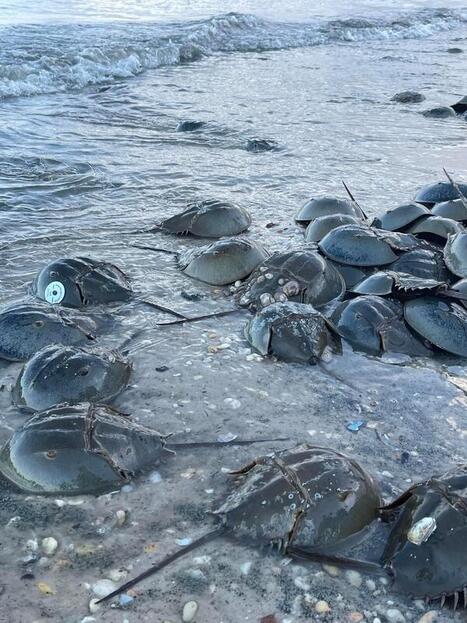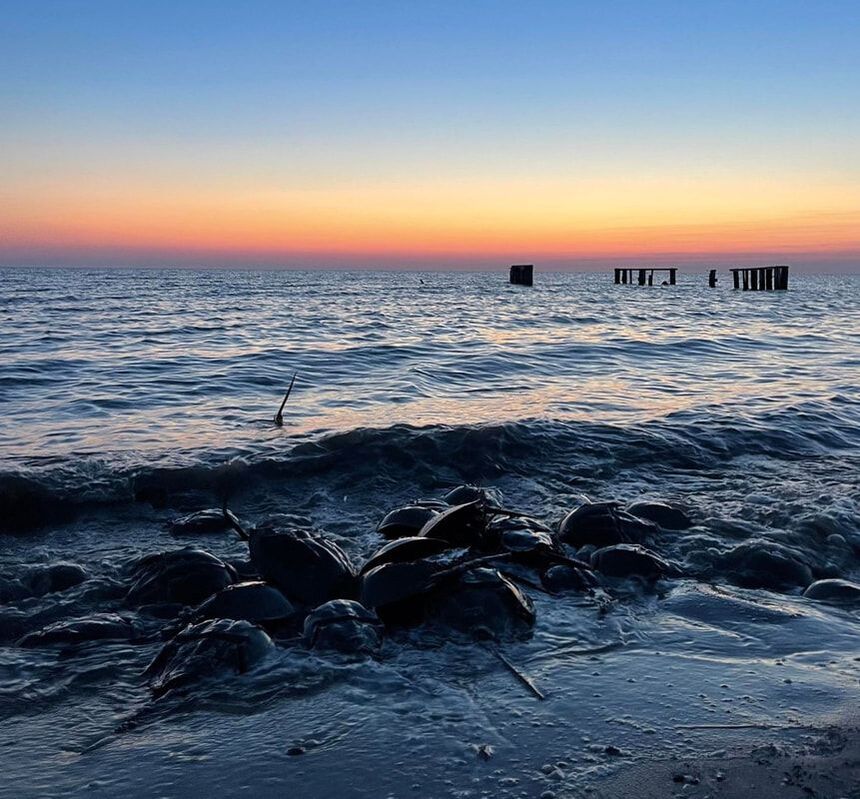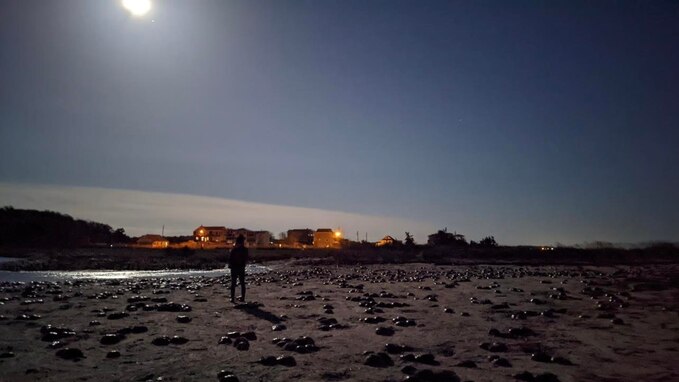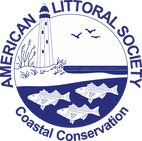|
by Toni Rose Tablante, American Littoral Society Habitat Restoration Technician May and June are all about horseshoe crabs at the American Littoral Society. The season was jam-packed and non-stop…let’s find out why! Working in the heart of the largest horseshoe crab spawning area in the world has been nothing short of fascinating. I started my position with the Society right at the beginning of horseshoe crab season and it was amazing and demanding! In addition to jumping right into the Society's annual crab tagging efforts, this year also included days and nights of monitoring how the crabs are affected by a new restoration project near Nantuxent Creek in Cumberland County, NJ. Let's start with some background: The American Littoral Society has a long history of fighting for the protection of horseshoe crabs and was instrumental in restoring their spawning habitats in the wake of Superstorm Sandy. And for the last decade, our Habitat Restoration team has continued to rebuild beaches that support successful horseshoe crab spawning. Atlantic Horseshoe Crabs, (Limulus polyphemus), are a keystone species and play a vital ecological role in the of Delaware Bay. The crabs spend most of their lives underwater, then come up onto the shores of the Delaware Bay to spawn from May through June, a ritual they've been doing for eons. Spawning female crabs bury millions of tiny blue-green eggs in the sand, leaving behind future generations. In the process of burying eggs, many previously buried eggs get upturned and wash across the beach. This horseshoe crab egg buffet is what hungry shorebirds need to build up their fat reserves to continue to the breeding grounds further north. Birds such as the Red Knot, (Calidris canutus), travel all the way from the tip of South America to the Canadian Arctic, and specifically stop at the Delaware Bay to feed on horseshoe crab eggs to double their weight. Our restoration work is important to help improve and maintain the habitats of these species and give them chances to successfully continue their lifecycles. Although we have seen hundreds of horseshoe crabs and plenty of eggs on the beaches this season, the population of horseshoe crabs is significantly lower than in the past, and considered by many to be insufficient for maintaining the livelihoods of migratory shorebirds that depend on them. The Delaware Bay spawn is a spectacle with peak spawning times for horseshoe crabs occurring during high tides on the new/full moons. Because of this, our work has to be done on a schedule dictated by lunar cycles and tidal forces, which is certainly not a typical 9-5 work schedule! To gauge the success of our beach restoration projects and to track horseshoe crab movements around the Bay, the Society runs one of the largest volunteer-based horseshoe crab tagging programs in the world. Every year we bring hundreds of volunteers onto darkened beaches to tag thousands of crabs. (You can sign up for 2023 at horseshoecrabtagging.org) When the spawning season began, I was in similar shoes as some of our awesome volunteers - I had never seen thousands of horseshoe crabs take over a beach, let alone tried tagging one. I tagged my first horseshoe crab upon starting this job, and now, I have probably tagged over 300! I've given quite a few horseshoe crab talks covering their life history and anatomy, each talk differing slightly each night as I fine-tuned my presentation. It's been super fun to interact with our volunteers and experience the awesome season with them. What started off as the regular horseshoe crab tagging program here in the Delaware Bay turned into back-to-back days and late nights of monitoring at the NJ Department of Environmental Protection Money Island restoration project. Part of our monitoring involved evaluating how horseshoe crabs interact with rock breakwater structures. Low tide exposes the breakwaters, so we would wade into the water to see if any horseshoe crabs were stuck. So far, things look good. On some occasions, this work had us close to the shorebirds, including the endangered Red Knot (which are listed as threatened under the Endangered Species Act because the Atlantic flyway population has declined by roughly 80 percent over the past decade), but far enough to not disturb them. Getting great views through the binoculars was a huge plus! Then, when the sun is down and the tide is high, we would be right back out there for the horseshoe crab spawning survey. Those surveys include tagging hundreds of horseshoe crabs, then implementing a resight-focused spawning survey, which involved counting the number of crabs inside a randomized quadrat, paying close attention to record those that were tagged. This data helps estimate overall crab population and migration patterns, which can demonstrate the value of continued habitat restoration along the Delaware Bay.  Horseshoe crab clusters plus one tagged horseshoe crab in the bunch at Thompsons Beach, Cumberland County, NJ. Horseshoe crab clusters plus one tagged horseshoe crab in the bunch at Thompsons Beach, Cumberland County, NJ. Although, horseshoe crab season kept us super busy and slightly sleep deprived consisting of late nights, lots of tags, and loads of horseshoe crab eggs. During the late hours, I've had the chance to walk up and down the beach with Shane and Quinn, encountering hundreds of horseshoe crabs, bright moons, and my first meteor sighting! It's a special thing to explore the beaches at a time when the rest of the world is "asleep." And although tiring, it was moments like these that made the exhaustion worth it. As the horseshoe crabs leave the bay and make their way back out to the ocean, the Littoral Society's Delaware Bayshore Habitat Restoration staff is off to the next project! Stay tuned for more...
Shaun
8/24/2022 11:01:34 am
Awesome!
American Littoral Society
8/24/2022 11:04:33 am
Thanks for your comment!
Frank Taylor
8/26/2022 02:07:15 pm
Great article Toni Rose! You also do a great job with your in the field presentations!
Toni Rose
8/29/2022 10:50:25 am
Thanks so much Frank! Comments are closed.
|
Archives
July 2024
Categories
All
|



